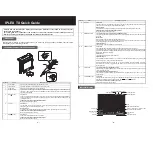
Reference
116
What is the actual procedure
for extraction analysis of the
oil content of a soil sample?
Soil in a powder form with no water content:
1.
Remove any rocks, grass, etc.
2.
Weigh out 1 g to 100 g of the soil (the optimum amount depends on the oil
content concentration).
3.
Add solvent to the sample and stir.
4.
Filter with filter paper or quartz wool.
5.
Perform measurement.
Soil sample containing water content:
1.
Remove any rocks, grass, etc. Add an equal or greater quantity (as the
sample) of saturated saline solution to the sample and stir.
2.
Add the solvent and extract the oil content.
3.
Check the condition of the solvent layer. If it is difficult to separate the solvent
layer, perform the next steps. If the solvent layer can be separated, go directly
to step 7.
4.
Discard the top saturated saline solution layer (this contains soil particles
and thus is in a muddy water state)
5.
Add new saturated saline solution and stir.
6.
Repeat steps 4. to 5. until the emulsion layer is reduced and the solvent layer
can be collected. If you run out of solvent while repeating the steps, measure
more solvent, add, and stir.
7.
Perform measurement.
8.
Calculate the concentration from the measurement result based on the total
amount of solvent.
I want to measure the oil
content of water, but the oil
is in an emulsified state.
Or, the oil is floating on the
surface of the water and is
also adhering to the inner
sides of the container.
What extraction method
should I use to analyze
sample water in this state?
Observe the following 3 points to obtain accurate measurement results.
Thoroughly wash the inside of the sample container with solvent until no oil adheres.
Use a separating funnel to wash with solvent until the emulsion layer disappears.
Sufficiently dilute sample water with floating oil before measurement.
An example extraction procedure is described below for reference.
1.
Pour all of the sample water in the sample container into a separating funnel.
2.
Add 20 mL of saturated saline solution to the sample container and wash the
inner sides, and then add this washing liquid to the separating funnel.
3.
Add 10 mL of solvent to the sample container, and then add that solvent to
the separating funnel.
The residual oil content is dissolved.
4.
5.
Shake the separating funnel and perform extraction.
6.
After letting the liquid sit, check the solvent layer. If the solvent layer cannot be
collected or an emulsion layer remains, perform the next steps. If the solvent
layer can be collected, collect the solvent layer and go directly to step 12.
7.
Add an additional 50 mL of solvent to the separating funnel and shake well.
8.
Let the liquid sit, and then collect the solvent layer while leaving the emulsion
layer.
9.
Repeat steps 7. to 8. until the emulsion layer disappears.
10.
After the emulsion layer disappears, add an additional 50 mL of solvent to the
separating funnel and shake well.
11.
Let sit, and then collect the solvent layer.
12.
Measure the total volume (mL) of the collected solvent with a measuring
cylinder.
13.
Dilute if necessary, and then measure the collected solvent on the OCMA.
Question
Answer






































